May is the start of Invasive Species Awareness Month in Hawai‘i. While recognizing this issue as an “awareness month” is in its eighth year, invasive species have been a problem for much longer than that. The isolated evolution of the plants and animals over millions of years created one of the most unique ecosystems on Earth, with approximately 90% of native species found nowhere else. However, this island paradise now faces one of the highest rates of species extinction in the world, largely due to invasive species. Here are some of the most visible and impactful invaders you might encounter during a visit to the Hawaiian Islands.
Coqui Frogs
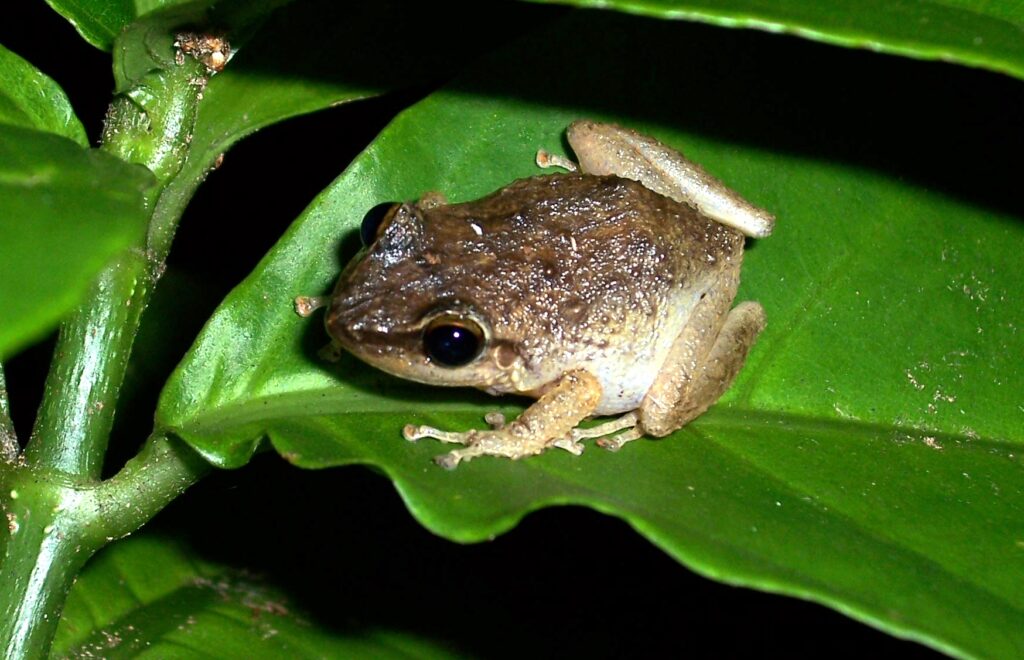
These small frogs from Puerto Rico might seem harmless, but their distinctive nighttime call—”ko-KEE, ko-KEE”—can reach up to 90 decibels, turning once peaceful Hawaiian nights into noisy ordeals. First appearing in the late 1980s through plant shipments, coqui frogs have no natural predators in Hawaii and have reached densities of up to 10,000 frogs per acre in some areas. Beyond their noise pollution, they feed voraciously on native insects that are critical for Hawaii’s ecosystem balance. Plus, they could be a built-in buffet if any snakes every become established here, as they have on other Pacific islands such as Guam.
Feral Pigs
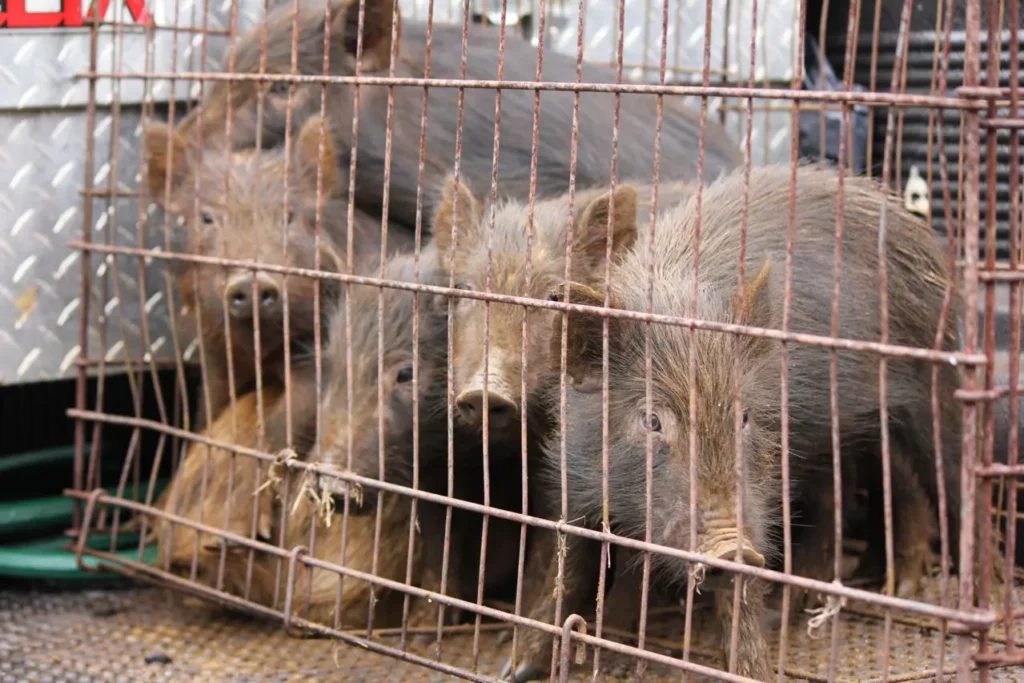
Introduced by Polynesians and later Europeans, feral pigs have become one of Hawai‘i’s most destructive invasive species. These descendants of both Asian and domestic pigs uproot native plants, accelerate erosion, and create breeding grounds for mosquitoes in their wallows. Their digging behavior spreads invasive plant seeds and destroys the understory of Hawaiian forests. Feral pigs are particularly problematic because they can access remote wilderness areas that harbor the last refuges of many endangered native species. In fact, the spread of invasive guava forests can be directly tied to the spread of feral pigs.
Mongoose
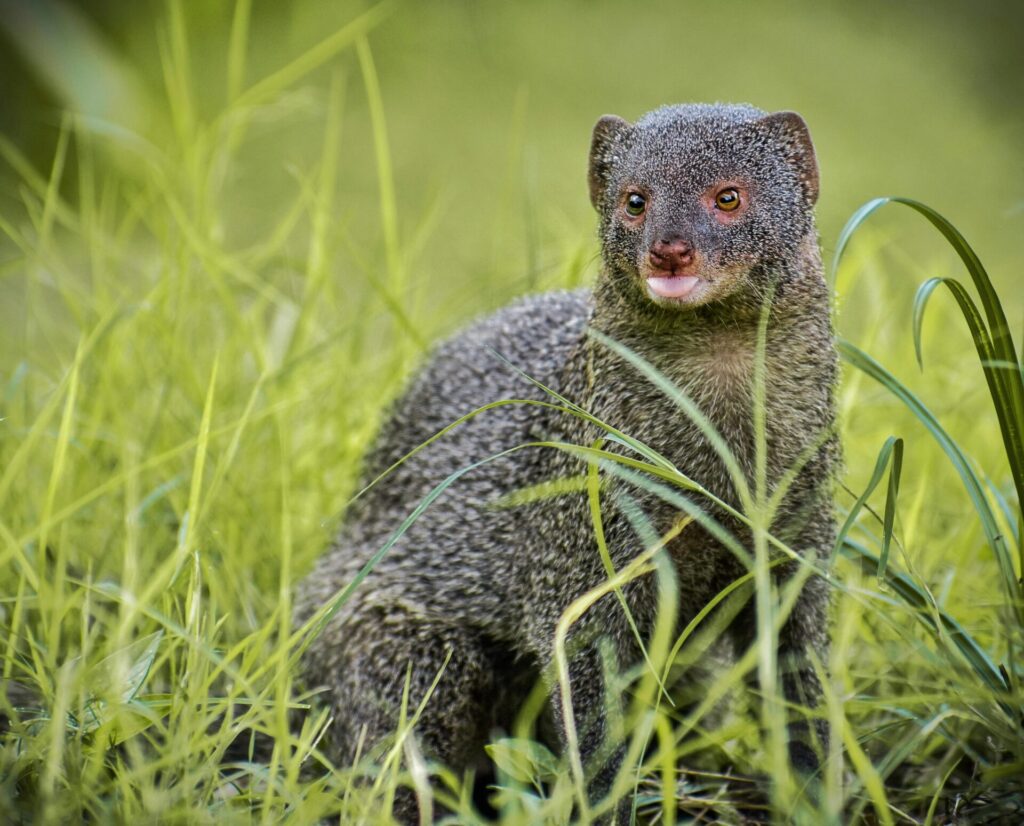
In what stands as one of history’s great ecological miscalculations, the small Indian mongoose was intentionally introduced to Hawai‘i in the 1880s to control rat populations in sugar cane fields. Unfortunately, rats are nocturnal while mongooses are active during the day, so they rarely encountered each other. Instead, mongooses became a major predator of native ground-nesting birds, contributing to multiple extinctions. Their distinctive rusty-brown fur and quick movements make them easily spotted along roadsides across the islands.
Miconia
Thanks to the Big Island Invasive Species Committee
Often called the “purple plague,” Miconia is an ornamental plant from South America with large, purple-underside leaves that has become one of Hawaii’s most invasive plants. A single tree can produce millions of seeds annually that are easily spread by birds. Miconia forms dense thickets that shade out native plants and whose shallow root systems increase the risk of landslides. On the Big Island and Maui, the distinctive purple-leaved trees have transformed entire landscapes.
Jackson Chameleons
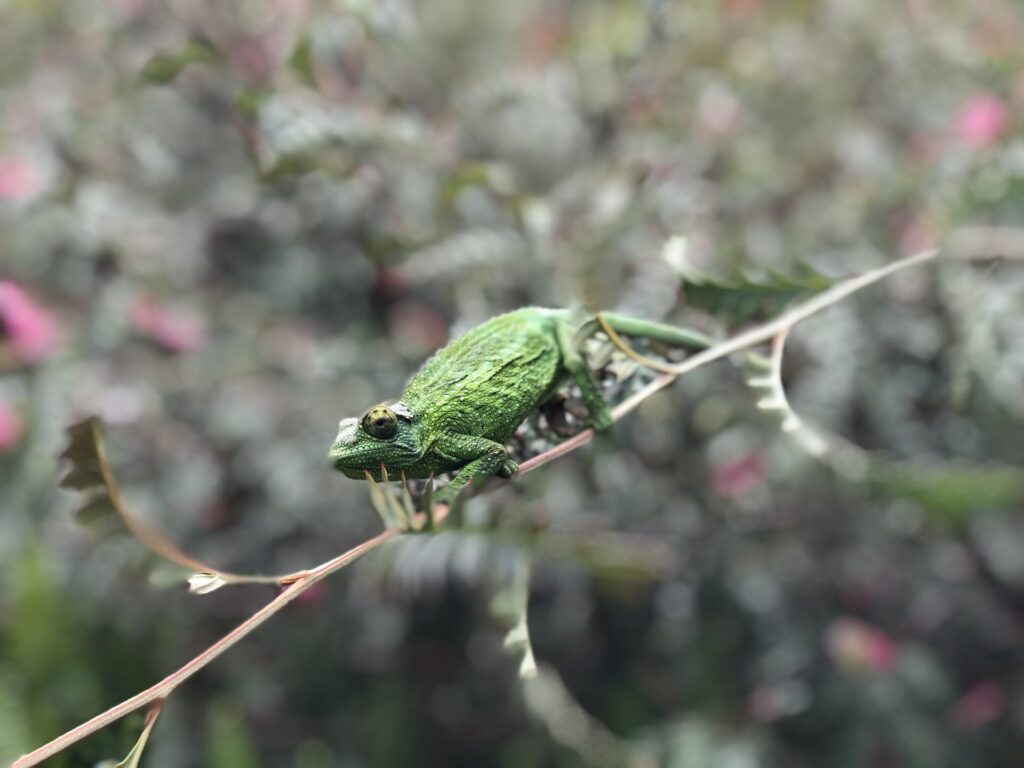
With their distinctive swiveling eyes, Jackson’s chameleons were introduced to Hawaii as pets in the 1970s. These striking reptiles have established wild populations, particularly on Oahu and Maui, where they feed on native insects and snails, many of which exist nowhere else in the world. Their specialized hunting abilities make them particularly effective predators of Hawaii’s unique invertebrate species.
Fire Ants
Little fire ants deliver a painful sting that feels like fire—hence their name. These tiny invaders have spread throughout the islands, particularly in wet areas on the Big Island. They infest agricultural areas, natural forests, and even homes. Their stings can cause injuries to pets and wildlife, including blindness in animals when they sting eyes. Their small size makes them nearly invisible until you feel their painful presence.
Albizia Trees
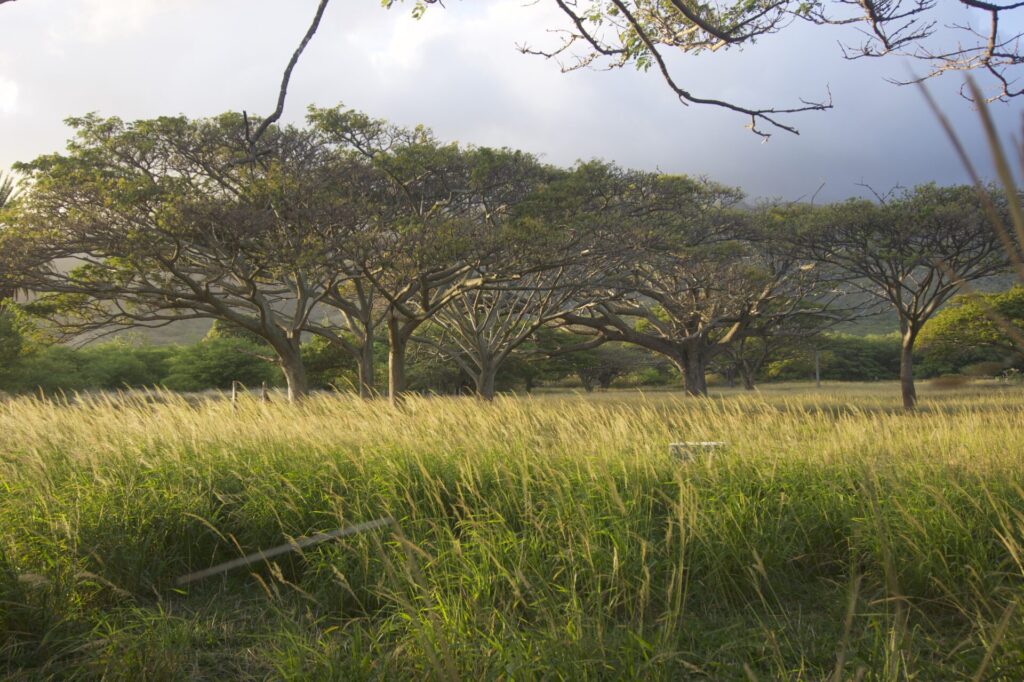
Perhaps the most visibly transformative invasive species, the albizia is one of the fastest-growing trees in the world. These towering giants with feathery leaves can grow up to 15 feet per year and completely alter forest canopies. During storms, their brittle wood leads to falling branches that damage infrastructure and native forests alike. Driving through parts of the Big Island and Oahu, you’ll see entire forests dominated by these invasive giants.
Conservation Efforts and Visitor Awareness
Hawaii spends millions annually combating invasive species, with dedicated teams working to control populations and prevent new introductions. As a visitor, you can help by:
- Cleaning hiking boots before and after trails
- Never releasing pets into the wild
- Reporting sightings of invasive species to local authorities
- Supporting conservation organizations working to protect native ecosystems
Hawaii’s battle against invasive species highlights the fragility of island ecosystems and the importance of biosecurity. By understanding these threats, visitors and residents alike can help preserve the true natural heritage of these remarkable islands for future generations. For more information about these and other invasive species, and efforts to manage them, check out the Hawaii Invasive Species Council.
ATVs
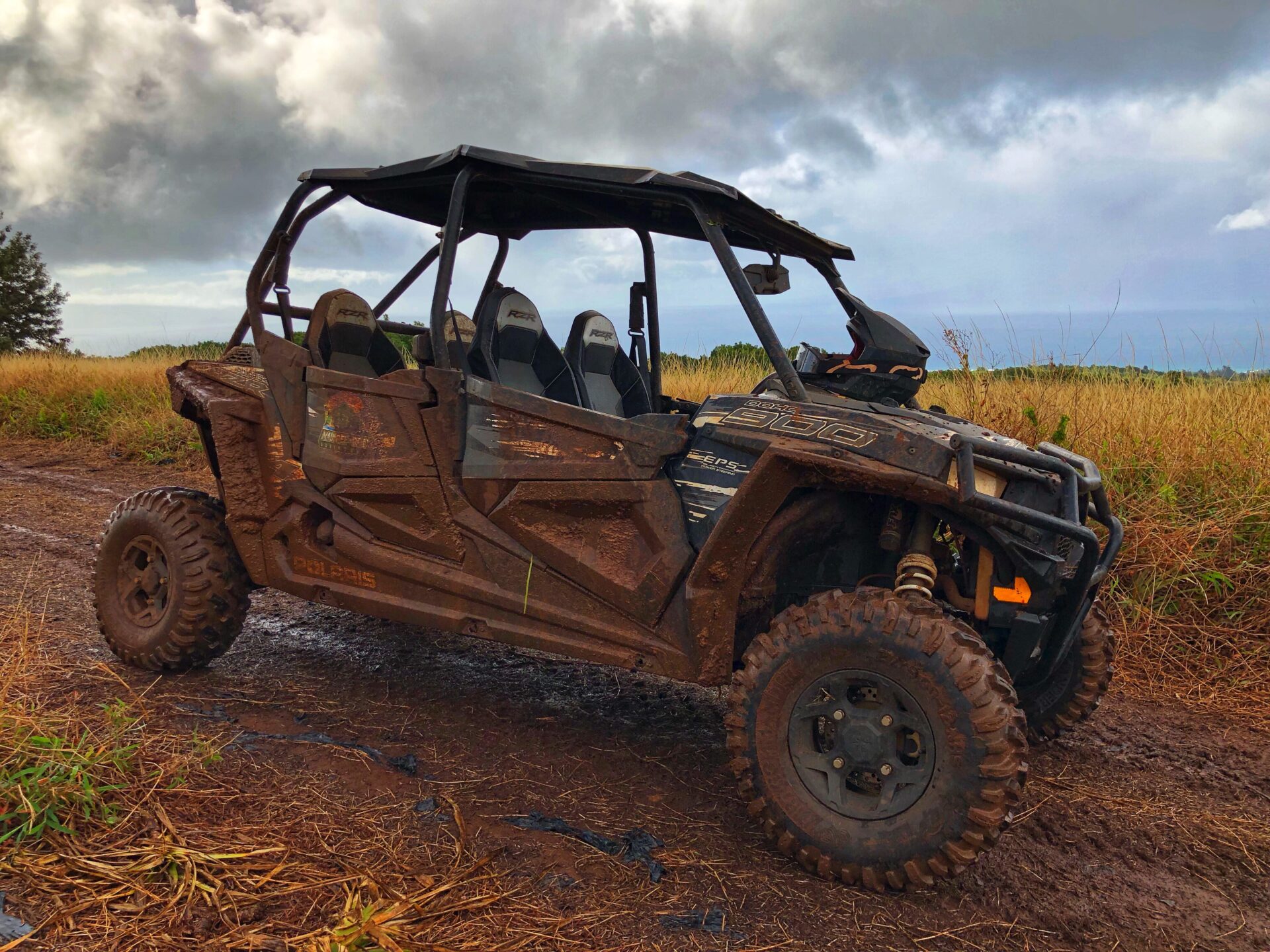
Maui Off Road Adventures
Maui Off-Road Adventures leads the pack with their powerful Honda Talon 1000X-4s, offering an exhilarating off-road experience. You’ll drive through old pineapple fields above Kapalua, enjoying stunning views of Moloka‘i and Lana‘i. The tour includes several stops to switch drivers and snap some dirt-smeared selfies.

0 Comments